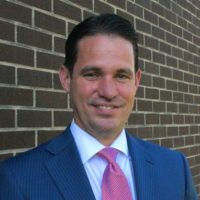A seminal book for me around school turnaround is So Much Reform, So Little Change by Charles Payne. Payne describes traditionally low-performing schools as places “where there is a general feeling of instability—personnel come and go, students come and go, programs come and go – all of it presided over by a dysfunctional bureaucracy.” That accurately describes the state of affairs when I arrived—there was little student engagement and a general feeling of hopelessness in the building.
During my career, I’ve always emphasized the importance of culture and climate. I agree with Payne’s assertion that culture and climate is the foundation on which reform can be built. Good ideas won’t save us. Just bringing good ideas into schools with severely damaged social infrastructure is tantamount to bringing a lighted candle into a wind tunnel.
The leader of the building sets the tone for an environment where all teachers can teach and students can learn. At Doss, we immediately focused on creating a learning environment where there were high expectations for student behavior and learning.
More importantly, the new culture was centered on high expectations for staff to reach every student and provide rich instruction and rigorous curriculum. In the beginning, some efforts were met with excuses about challenges we could not change, like poverty. I called this information “true but useless.” The information might be true, but it’s useless in our efforts to reach and teach every child. Our job is to overcome the obstacles.
Over time, we built trust with students and staff, and the tone in the building changed.
At Doss, we channeled the positive energy and intensely focused on our mission and vision; we called it our “North Star,” and that was embraced by every stakeholder. I believe that is how you avoid the turnaround trap that Payne describes as “… the safest generalizations we can make about inner-city schools is that many of them are trying to do too much at once, the too-familiar pattern of lots and lots of motion with too little movement.” We had a laser-like intent on ensuring every student at Doss was connected to and engaged in school. This meant we provided wrap-around services to students, after-school activities, and summer learning opportunities. Most importantly, we ensured every student had access to engaging and well-resourced curricular programs like career and technical education, music and art.
We also reimagined the way students “did” school. We became one of the early adopters of the Academies of Louisville model where every student has a pathway where his or her curriculum aligns with student interests. This allows for more relevant instruction and lessons that engage students. We also built a community at Doss committed to helping our students explore their interests through project-based learning and we created “application day,” where students had time during the day to explore real-world applications of what they were learning in the classroom. What we found when looking at data on our “application days” was that there was an increase in student engagement and attendance, and a decrease in disciplinary referrals.
Following this model of improving culture and climate, increasing student engagement, and building professional capacity of teachers, we saw results immediately at Doss. In fact, our data around student and teacher satisfaction skyrocketed, our staff transfer requests diminished, and we saw some of the highest increases in standardized test scores in the state.
However, the myth of a superhero principal who will immediately take a school with significant student need and drastically turn around a school and improve test score data overnight is a fallacy.
Although we must keep student outcomes front and center, we cannot let the peaks and valleys of high-stakes accountability testing impact the focus on our “North Star” that will lead to systemic and sustained growth over time. The key is building year after year on sustainable progress that improves instruction and student outcomes. As administrators, we have to examine long-term trends if we are to successfully turnaround schools and replicate the model of success.
© Cognia Inc.
This article may be republished or reproduced in accordance with The Source Copyright Policy.
The information in this article is given to the reader with the understanding that neither the author nor Cognia is in engaged in rendering any legal or business advice to the user or general public. The views, thoughts, and opinions expressed in this article belong solely to the author(s), and do not necessarily reflect the official policy or position of Cognia, the author’s employer, organization, or other group or individual.

